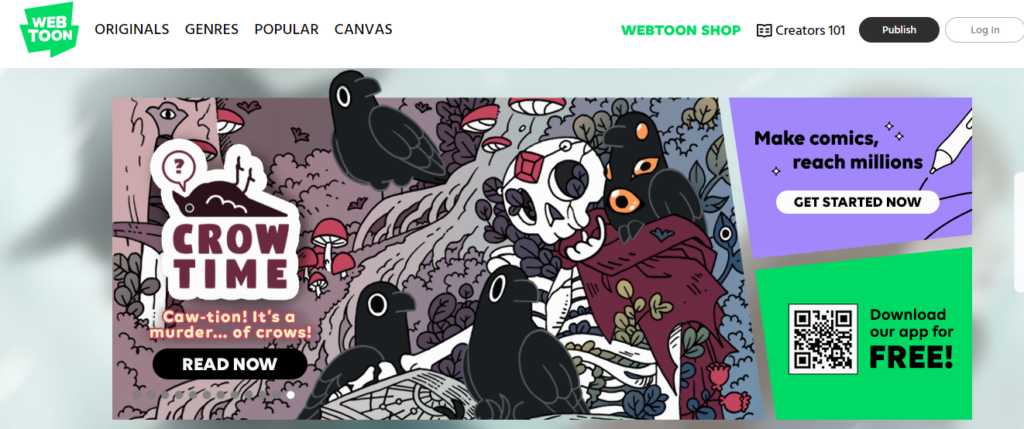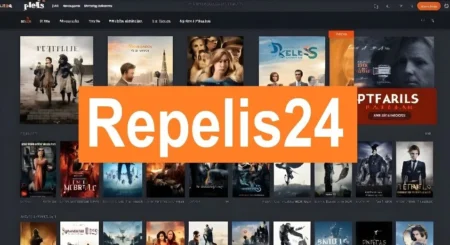Webtoon comics, short for web cartoons, are a digital form of comics that originated in South Korea and have gained widespread popularity worldwide. Unlike traditional comics, webtoons are specifically designed and optimized for online reading. They are typically published as a long, vertical strip, making them easily accessible on various digital devices.
In recent years, an estimated 85.6 million people have used Naver Webtoon, a South Korean online service that offers webtoons or online comics. The ease of accessibility through dedicated webtoon platforms and apps has contributed to their widespread acceptance. Platforms such as LINE Webtoon, Tapas, and Lezhin Comics host many webtoon titles, allowing readers to explore a wide range of genres and styles.
Traditional Comics vs. Webtoon Comics
1- Format and Layout:
- Traditional Comics: Presented in a page-by-page format, with panels arranged horizontally and vertically. Readers navigate by turning pages.
- Webtoon: Designed for online reading, presented in a long, vertical strip format. Readers scroll down to progress through the story, creating a continuous and seamless experience.
2- Pacing and Flow:
- Traditional Comics: Pacing is controlled by the layout of panels on a page. Readers can control the speed of reading by turning pages.
- WebtoonPacing is controlled by scrolling. Creators can use vertical space creatively, controlling the flow of the narrative through a single, continuous scroll.
3- Engagement and Interaction:
- Traditional Comics: Limited interaction beyond reading. Some may include letter pages or fan mail sections.
- Webtoon: Often feature interactive elements, including likes, comments, and sharing options. Readers can engage with creators and other readers in real time, influencing the story’s development.
4- Visual Storytelling Techniques:
- Traditional Comics: Relies on panel layout, page-turning, and the gutter (space between panels) to convey the story visually.
- Webtoon: Utilizes vertical scrolling and long panels and sometimes employs cinematic techniques, sound effects, or motion graphics for dynamic visual storytelling.
5- Accessibility:
- Traditional Comics: Typically printed and distributed physically, requiring readers to purchase or borrow a physical copy.
- Webtoon: Digital and easily accessible through dedicated platforms and apps. Readers can access a vast library of titles with just a few clicks.
6- Creator-Reader Interaction:
- Traditional Comics: Limited direct interaction between creators and readers. Feedback may come through letters columns or fan events.
- Webtoon: Allows for real-time interaction through comments, likes, and shares. Creators can receive immediate feedback and connect with their audience more directly.
7- Innovation and Experimentation:
- Traditional Comics: Conventional in terms of format, with limited room for experimentation due to the constraints of printed pages.
- Webtoon: Embraces innovation, experimenting with non-traditional formats, vertical storytelling, and multimedia elements to enhance the reading experience.
The Webtoon Comics Experience

1. Interactive Features
Many Webtoon Comics incorporate interactive features, allowing readers to engage with the story uniquely. From comments and likes to polls and quizzes, readers become integral to storytelling, fostering a sense of community around each comic.
2. Author-Reader Connection
Comics often provide a platform for direct interaction between authors and readers. Readers can express their thoughts and emotions through comments and feedback, creating a dynamic relationship between the creator and the audience. This connection adds a personal touch to the reading experience.
3. Adaptability to Technology
Comics are tailored for the digital age, adapting seamlessly to various devices. Whether you’re reading on a computer, tablet, or smartphone, the responsive design ensures an optimal viewing experience. This accessibility contributes to the widespread popularity of Comics.
Check out the Best Airplane Games
Features of Webtoon Comics

1. Vertical Scroll Format
The most distinctive feature of Webtoon is the vertical scroll format. Unlike traditional comics, Webtoon is designed for seamless vertical scrolling, unlike traditional comics, which use page-turning. This feature enhances the reader’s experience, providing a continuous and fluid narrative flow.
2. Dynamic Panel Layouts
Webtoonleverages dynamic panel layouts to create visually stunning and engaging storytelling. Creative panel arrangements, transitions, and visual effects add a cinematic quality to the reading experience, making it more immersive and captivating.
3. Colorful and Vibrant Artwork
Comics often feature colorful and vibrant artwork that adds a layer of visual appeal. The use of vivid colors and expressive illustrations contributes to the overall aesthetic and enhances the emotional impact of the storytelling.
4. Interactive Elements
Many Comics incorporate interactive elements that allow readers to engage with the content. Features such as comments, likes, and sharing options foster a sense of community among readers. Some Webtoon platforms even include polls, quizzes, and other interactive features to involve the audience in storytelling.
5. Diverse Genres and Themes
Comics covers various genres and themes, catering to diverse audience preferences. From romance and fantasy to horror and slice-of-life, the expansive variety ensures that there is something for every reader. This diversity contributes to the popularity and inclusivity of Comics.
6. Mobile Accessibility
Comics are designed with mobile accessibility in mind, allowing readers to enjoy their favorite comics on various devices. The responsive design ensures an optimal viewing experience, whether on a smartphone, tablet, or computer, making it convenient for readers to access their favorite stories anytime, anywhere.
7. Author-Reader Interaction
Good webtoon comics foster a unique connection between authors and readers. Readers can directly communicate with the creators through comments and feedback, sharing their thoughts and reactions. This interaction creates a sense of community and allows authors to connect with their audience personally.
The Downsides of Webtoon
1. Addiction and Time Consumption
The captivating nature of Comics, with their visually appealing layouts and compelling narratives, can lead to addiction. Readers may spend excessive time scrolling through episodes, potentially affecting productivity and real-world interactions. While enhancing the reading experience, the seamless scrolling feature can contribute to extended engagement periods.
2. Quality Concerns
As the popularity of Webtoon continues to soar, there’s a growing concern about the overall quality of content. With the ease of self-publishing, a flood of comics, varying in artistic and narrative quality, saturates the platform. This abundance makes it challenging for readers to distinguish between high-quality and mediocre content.
3. Monetization Pressures on Creators
While webtoon dragon comics provides a platform for aspiring creators, there’s an underlying pressure to generate income. Some creators may compromise the integrity of their stories by incorporating trends or clickbait elements to attract a larger audience. This commercialization can hinder the artistic freedom that traditional forms of storytelling often afford.
Conclusion:
Like every entertainment medium, webtoon comics have advantages and disadvantages. It is imperative that, when navigating the digital realm, both producers and readers keep these things in mind. Webtoon Comics’ features lead to their widespread appeal and success in the digital storytelling world.







